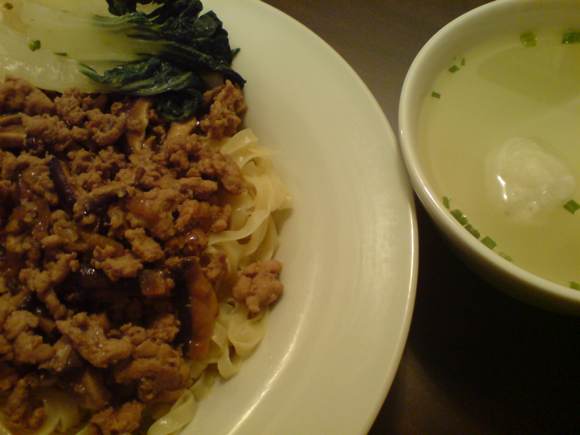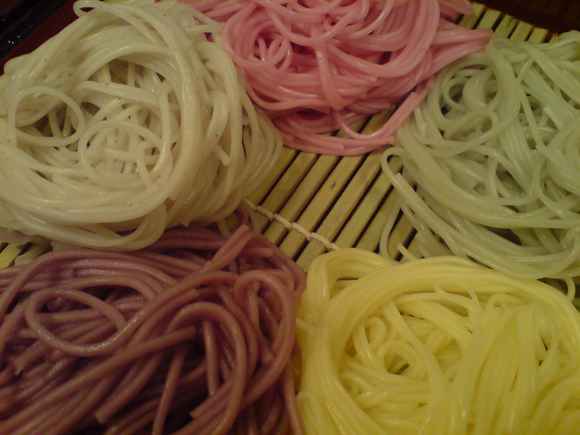It's the last day of my Olympic Bento Week! YH surprised me last night by saying his Friday lunch meeting had been cancelled, so he wanted a bento for the next day. My original plan had been to throw together some leftovers for myself, but now I had to come up with something a little better, as well as enough food to feed two...
The traditional Chap Ch'ae recipe usually includes bean sprouts, mushrooms, spinach and meat such as chicken mixed with cellophane noodles, seasoned with garlic, sesame seed oil, sesame seeds and soy sauce. However, there is really nothing to stop you from making your own variation by adding whatever vegetables and meat you have on hand. Basically, if the ingredients are suitable for a Chinese-style stir-fry dish, it would work for the Chap Ch'ae. My version today had carrots, onions, capsicum and chicken inside.
As I had leftover vegetables, I packed a small side salad to accompany the noodles made up of potato, lettuce and cherry tomatoes. (As you will note, I've finally given up on adding strange purple/blue items for the Olympic colours...) I also had some frankfurters in the fridge, so I made some octopus frankfurters to decorate the bento as the pile of noodles on their own looked a little plain. The Japanese love to make little shapes out of frankfurters for their bentos, and although I don't usually cook with frankfurters (unless I'm making hot dogs) I must say the octopus frank is so easy to make and visually appealing that I just can't resist.

Here's a rough how-to guide for the Chap Cha'ae - I don't have a proper recipe as I just sort of add whatever amount I need according to taste...
Firstly, boil some water in a saucepan and add the cellophane noodles. Mix them to separate, but be ready to take them out of the water as they cook very quickly. The instructions on my pack said to boil the noodles for 5 minutes - but after less than a minute, they were done (taste a noodle to check). Rinse the noodles in cold water until cooled, and put them back in the saucepan. With a pair of scissors, cut up the noodles a bit so they will be easier to mix and eat.
Next, chop up some garlic, slice whatever meat you are using (chicken, pork and beef all work well) and the rest of the ingredients into strips. Fry the garlic gently with some some oil (I use light olive oil), add the meat and stir fry until cooked. Add the meat on top of the cooked noodles in the saucepan. Then individually, fry (or re-heat) the rest of the ingredients you wish to add, and add them to the noodles. Mix everything together and season with soy sauce, sesame oil and a dash of sesame seeds to taste. If it is a bit tasteless you can also sprinkle in some chicken stock powder and a dash of oyster sauce, too.
Chap Ch'ae is great as it can be served warm or at room temperature, which makes it perfect for bento. If you plan to microwave it before eating, remember to check if your bento container is microwavable, as some aren't.
Back














